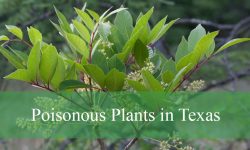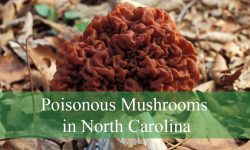Orange Hibiscus species enchant with a burst of vibrant warmth. From the trumpet-shaped blooms of ‘Orange Sunset Wind’ to the quirky ‘Pumpkin Pie,’ each variety paints gardens with unique allure.
Read the article below to find out more about the traits of the 13 orange hibiscus species.
Different Orange Hibiscus Types
Magic Moments
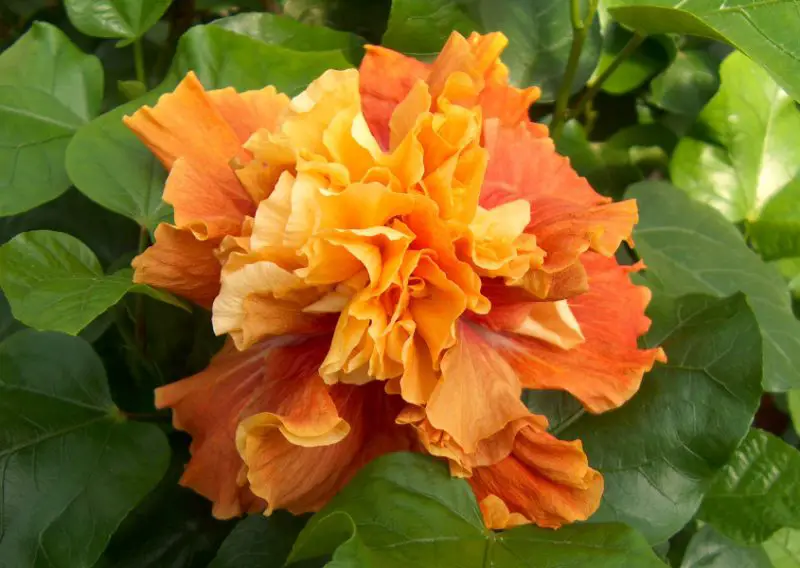
Hibiscus rosa-sinensis ‘Magic Moments,’ a Cajun series cultivar, is closely related to High Definition in terms of looks. This hibiscus thrives in full sun and is appropriate for zones 9–11. Its huge, double-petaled blooms are truly remarkable and defy description. Words may be inadequate, but the image does a better job of capturing the captivating Magic Moments.
Magic Moments, at a reasonable height of six feet, creates blossoms that look like a beautiful sunset. The rich orange and gold tones meld with the warm salmon pink to create an enthralling spectacle. These are some of the biggest hibiscus flowers, with a diameter of 8 to 10 inches and ruffled petals that hide the stigma and stamens. In the world of hibiscus, Magic Moments is without a doubt a striking and alluring specimen.
Orange Lion’s Tail
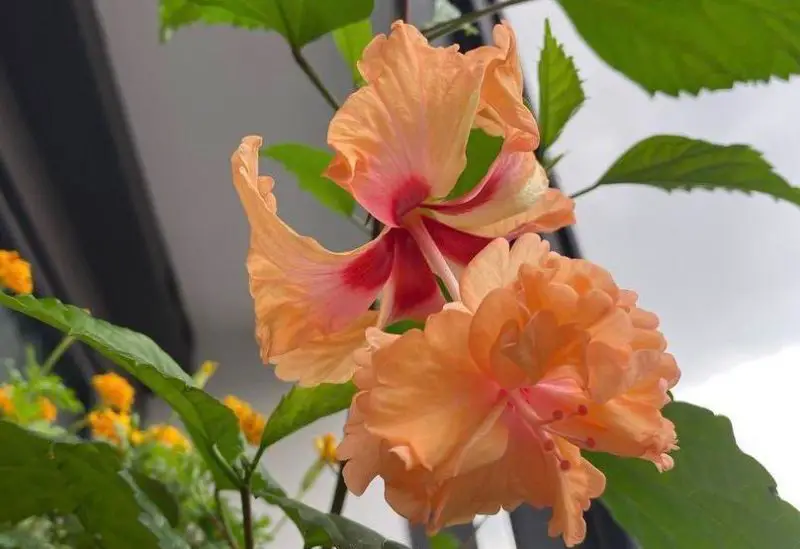
Among the hibiscuses classified as “Lion’s Tail,” the “Orange Lion’s Tail,” or Hibiscus El Capitola Sport, is distinct from the others. These plants have a unique appearance because of a spontaneous genetic mutation, unlike hybrids. The orange type has a peach-and-cream color with a dramatic red throat that softly changes to pink all over the petals.
Lion’s Tail’ hibiscus flowers are distinguished by their distinctive and eye-catching stigma in addition to their narrow, tapering petals. The second pair of ruffled petals at the end of the long, white stigma resembles a fluffy pom-pom. The striking and naturally occurring appearance of the ‘Orange Lion’s Tail’ is enhanced by its vibrant green and serrated foliage. It brings a bit of individuality to any garden, growing well in full sun and being suitable for hardiness zones 9–11.
Orange Seduction
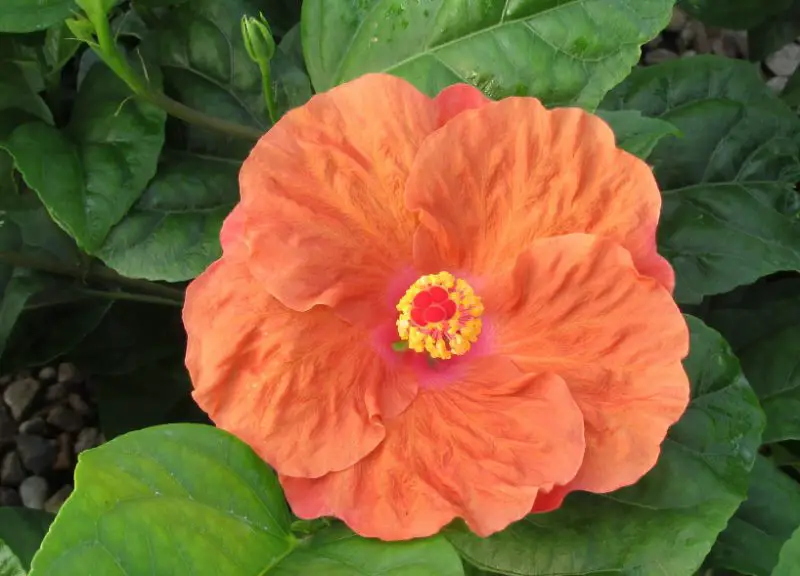
Hibiscus rosa-sinensis ‘Orange Seduction’ is a compact and colorful species with dense branching that can be used as a striking container plant, small hedge, or focal point in a tropical garden.
This cultivar is more well-liked by gardeners due to its longer flowering season, which lasts from spring to fall. Pollinators are drawn to the vivid blossoms because of their vivid brilliance, which is perfectly complemented by the glossy, bright green leaves.
‘Orange Seduction’ blooms have a pure orange color with a hint of darker and lighter coloring. A light pink throat accentuates a matching-colored stigma encircled by golden pollen. The petals of this lovely hibiscus cultivar have a texture that is crepe-like and ruffled, which adds further visual appeal. ‘Orange Seduction’ thrives in full to part sun and is perfect for hardiness zones 10–11. It is sure to be a beautiful addition to any garden with a tropical theme.
Orange Sunset Wind
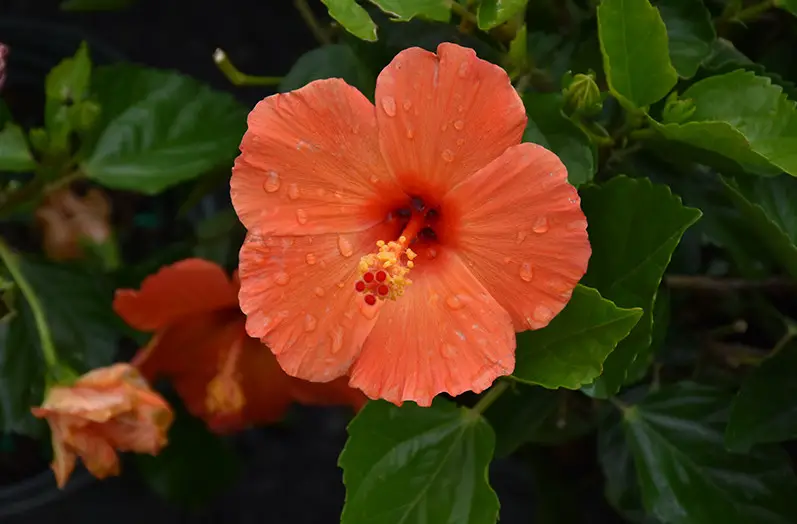
Hibiscus rosa-sinensis ‘Orange Sunset Wind’ presents a stunning return to the classic, single-petal form that is synonymous with hibiscus flowers. The large, round blooms exhibit a slightly trumpet-shaped structure, with petals gracefully whirling around like a pinwheel.
The color palette is a bold, pinkish orange, accentuated by a deep red eye at the center. The stigma takes on an orange hue, adorned with a scattering of pollen at the tip.
As a tropical variety, ‘Orange Sunset Wind’ flourishes in full to part sun, making it an ideal choice for hardiness zones 9-11. In cooler climates, it behaves as a perennial, losing its leaves and acting as an evergreen in tropical settings. However, it’s important to note its lack of frost tolerance, requiring container planting if grown outside the recommended zones. Regular and ample watering enhances the vibrancy of this captivating hibiscus variety.
Pumpkin Pie
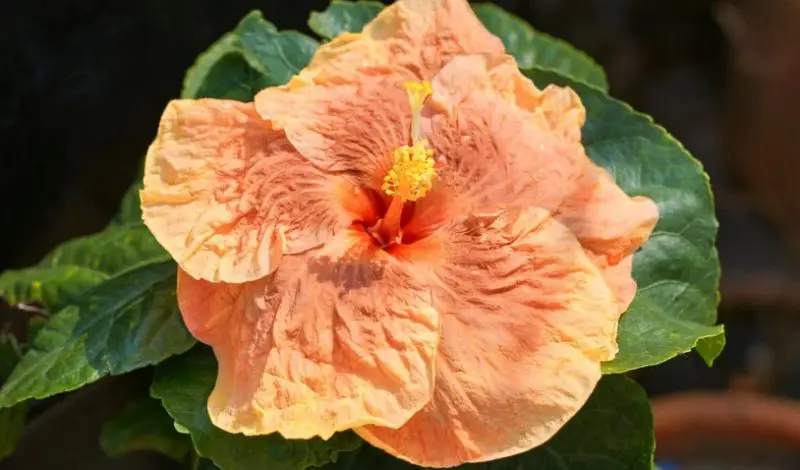
Hibiscus rosa-sinensis ‘Pumpkin Pie’ is a distinctive hybrid, with parentage that includes a pink variety, lending its pumpkin-colored flowers a beautiful pink eye. The blooms stand out with their extra-large size, reaching up to 10 inches in diameter. Adding another layer of uniqueness, the petals boast a crepe-like texture.
What makes ‘Pumpkin Pie’ truly special is its year-round blooming habit, particularly as an evergreen in tropical climates. This cultivar showcases a long and persistent blooming period, setting it apart from its orange hibiscus counterparts. Despite its rarity and relative difficulty to find, the allure of ‘Pumpkin Pie’ makes it a sought-after gem for enthusiasts looking to add a touch of quirky beauty to their gardens. Thriving in full to part sun and well-suited for hardiness zones 9-11, this hybrid promises a delightful and unique floral display.
Apricot Brandy
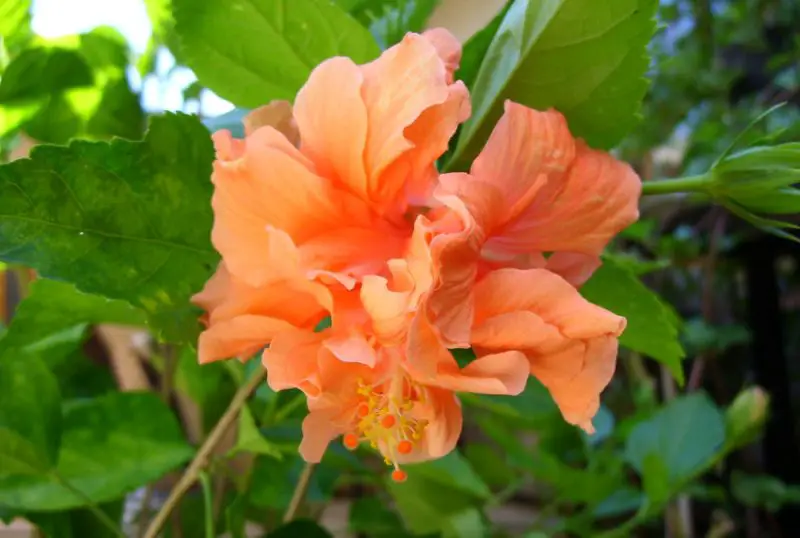
Hibiscus rosa-sinensis ‘Apricot Brandy,’ as it is scientifically called, is a beautiful variety of hibiscus that grows best in full sun and is appropriate for hardiness zones 9–10. It is a tropical beauty that looks great in gardens and loves warm weather and lots of sunlight. This cultivar, which can grow to be 8–10 feet tall, makes a great privacy hedge and can be creatively formed into a tiny tree or espalier.
The striking double-petal structure of Apricot Brandy, with its dazzling golden-peach tint evoking the apricot fruit, is what makes it unique. The flowers have a large stigma and a delicate, peony-like composition with ruffled petals. This captivating hibiscus variety’s visual extravaganza is completed by the serrated brilliant green leaves, which create depth, and the reddish hue in the throat.
Cheri
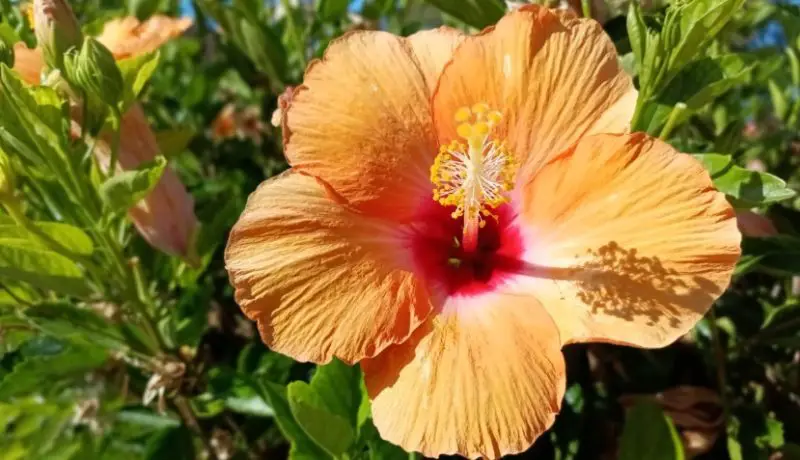
Hibiscus rosa-sinensis ‘Cheri,’ as it is officially known, is a beautiful medium-sized shrub that grows in an erect, spreading manner. This delightful hibiscus type thrives in hardiness zones 10–11 and attracts butterflies and hummingbirds with its self-seeding blossoms. It grows well in full to part sun.
Perfect for container planting, ‘Lovely Cheri’ is suitable for individuals living outside of zone 10, offering a hint of the tropics. But because of its genuine tropical character, it cannot endure freezing temperatures or drought.
Cheri’s blooms are a vibrant spectacle, featuring classic single-petal flowers in a light, almost neon orange shade. A distinct magenta eye takes center stage, enhanced by a subtle white ring that elegantly separates the two colors. Among the hibiscus genera, these blooms stand out as some of the most vivid and cheery.
Electric Orange
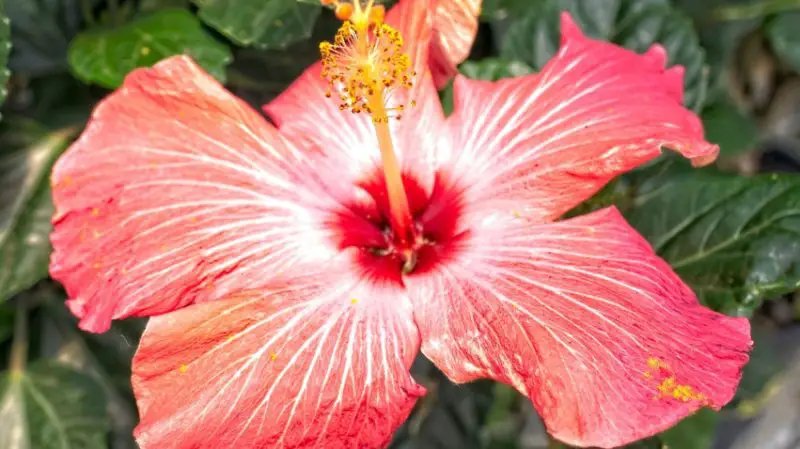
Electric Orange, officially known as Hibiscus x ‘Electric Orange,’ is a shrub that lives up to its electrifying name with some of the brightest orange blossoms ever seen. This hibiscus type thrives in full sun and is appropriate for hardiness zones 9–11. It is a stunning sight in any garden.
The blooms of Electric Orange are a luminous reddish-orange, emanating an electric vibrancy. A striking white flash at the center radiates through the flower in bright yellow veins, creating an illusion of inner illumination. With proper maintenance, these captivating blooms persist throughout the season. Measuring a moderate 6-8 inches in diameter, they boldly contrast against the smooth, shiny, and bright green foliage.
Distinguishing itself further, Electric Orange exhibits less common smooth-edged leaves for hibiscuses. Despite its rarity, this hybrid holds great promise and adeptly withstands the rigors of summer heat.
Fiesta

The ‘Fiesta’ Hibiscus has an extended blooming period that extends throughout the year, making it a perennial celebration. This tropical treasure displays its magnificent blossoms when it receives lots of sunlight and good watering.
Fiesta is a moderate grower that can adapt to be a houseplant and remains evergreen in warm areas. It can grow up to 8 feet tall and has huge glossy foliage with distinctly uneven margins.
Fiesta blooms have a vivid tangerine color with a faint pink undertone in the throat that progressively fades to white striations in the middle of the petals. To further enhance the festive attractiveness of this Hibiscus rosa-sinensis ‘Fiesta,’ the stigma is embellished with a shower of golden stamens covered in pollen. The petals have intricate ruffling around the margins.
High Definition
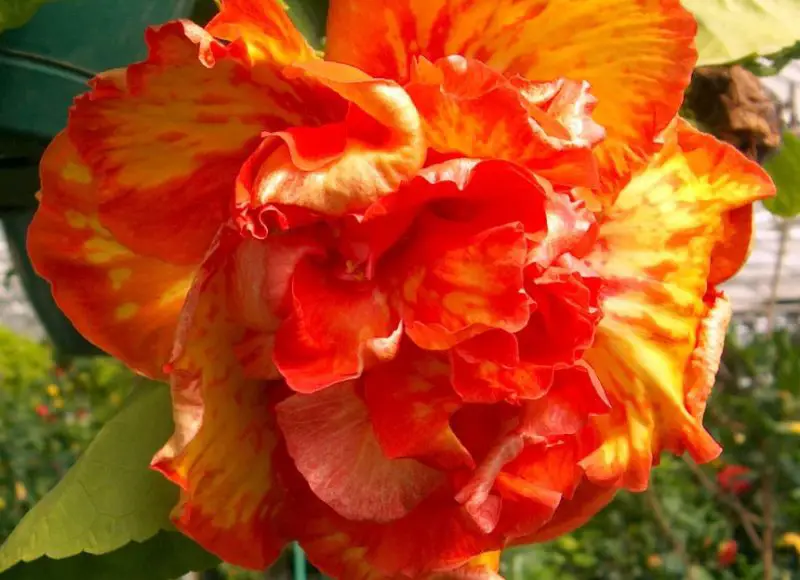
Hibiscus rosa-sinensis ‘High Definition,’ a striking orange hybrid with distinctive traits, belongs to the Cajun series. Because it is a sterile cultivar, cuttings must be used for propagation as it cannot be grown from seed. This low-growing hibiscus, which reaches a height of 5 feet, thrives in full light and is suited to hardiness zones 9 through 11. It must have enough of sunshine but be careful not to overwater.
‘High Definition’ is a branching plant that shows off its elaborate blossoms in abundance. At 6 inches in diameter, the totally double-petaled flowers are mid-sized for hibiscus but have a peony-like appearance, similar to Apricot Brandy. But these flowers are orange, with yellow splotches and speckles that are so finely rendered that they make for an extremely striking sight. This type is more expensive, but its charm makes up for its slow growth and difficulty in propagation.
Jane Cowl
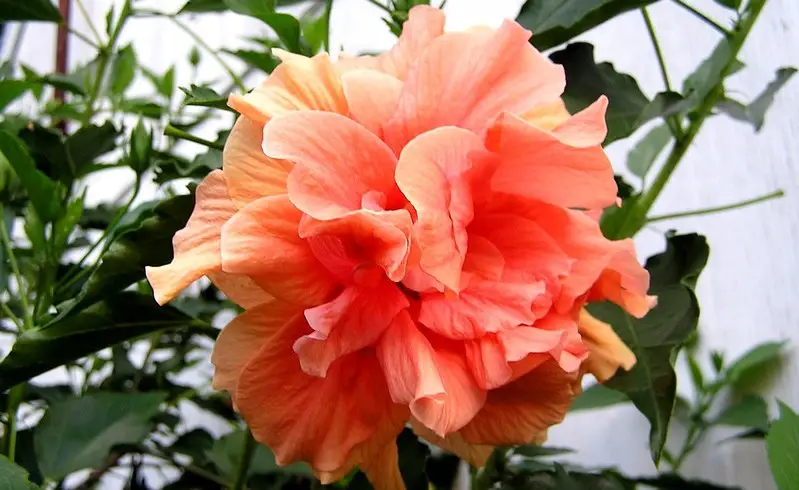
Hibiscus rosa-sinensis ‘Jane Cowl’ may have a late start to the season, but once it takes off, this cultivar is a rapid grower, gracing gardens with blooms throughout summer and into fall. Thriving in full to part sun and reaching a height of 6′-8′, ‘Jane Cowl’ adapts well to partially shaded areas. Given its tropical nature, it’s best suited for container cultivation north of zone 9, ensuring a vibrant and showy addition to any space.
The double-petal flowers of ‘Jane Cowl’ boast a warm, rosy-peach hue, with a touch of pink warming the bloom centers, accentuating the fancy, ruffled petals. Paired with bright green, serrated foliage, this cultivar creates a color combination that instantly transports one to a tropical vacation, making ‘Jane Cowl’ an irresistible floral escape.
People Who Read This Also Read:

